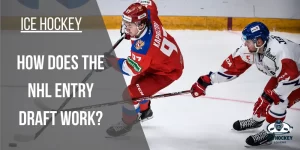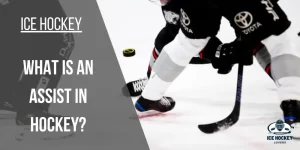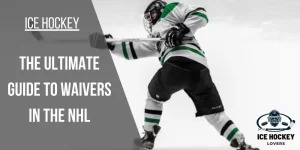Hockey Butt-Ending: A Comprehensive Guide for Players and Fans!
Hockey, a beloved sport known for its speed, skill, and physicality, has its fair share of controversial plays that spark debate among fans and experts. One such maneuver often raises eyebrows is the notorious “butt-ending” in ice hockey.
In this comprehensive guide, we will delve into the definition of butt-ending, its purpose, its application in the game, and its associated penalties. Let’s get started!
Table of Contents
What is Butt-Ending in Hockey?
Butt-ending is a penalty in ice hockey that happens when a player uses the upper part of their stick, called the butt-end, to check, poke, or hit another player. It’s a dangerous move that can result in severe injuries, so it’s usually punished with a major penalty, and the player is sent off the game.
NHL Rulebook Definition
The NHL rulebook defines butt-ending as follows:
Butt-Ending: A player shall not use the shaft of his stick above the upper hand to check an opponent in any manner, or to jab or spear an opponent.
Purpose and Application
Butt-ending serves multiple purposes in ice hockey. It can be employed as a defensive move to create separation between the opposing player and the puck. It can also be used as an offensive maneuver to protect the puck, gain leverage, or create space for a pass or shot.
When executing a butt-end, the player aims to make contact with the lower body or equipment of the opponent, explicitly targeting the area between the hips and the knees. By doing so, they can disrupt the opponent’s balance, impede their progress, or discourage them from engaging in physical play.
Penalties and Legalities
While butt-ending can be a valuable technique when used appropriately, it is essential to understand the penalties associated with its misuse. In ice hockey, deliberate or careless use of the butt end can have severe consequences.
- Minor Penalty: A minor penalty may be assessed if a player butt-ends an opponent and makes contact with their body or equipment without causing injury or endangering the opponent’s safety.
- Major Penalty: If a player butt-ends an opponent with excessive force, intent to injure, or in a manner that endangers the opponent’s safety, a major penalty will be assessed. This penalty results in the player being ejected from the game and often carries additional disciplinary measures from the league.
- Match Penalty: In cases where butt-ending is used with intent to injure, a match penalty is assessed. A match penalty carries an automatic ejection from the game, often resulting in a subsequent suspension.
Conclusion
In conclusion, butt-ending is a technique used in ice hockey to gain a competitive advantage offensively and defensively. When executed correctly and within the boundaries of the game, it provides players with the opportunity to disrupt their opponents, protect the puck, and create scoring opportunities. However, it is important to emphasize that butt-ending must be performed with caution and adhere to the rules and regulations of the game.

Who is Austin Taylor?
Meet Austin Taylor, your go-to source for everything ice hockey! With a passion for the sport that’s as deep as the ice itself, Austin Taylor brings you concise, expert insights and nitty-gritty details on all things hockey. From gear reviews to strategy breakdowns, Austin Taylor is your trusted guide to navigating the exhilarating world of ice hockey. Get ready to lace up your skates and dive into the game with Austin Taylor as your ultimate companion.




